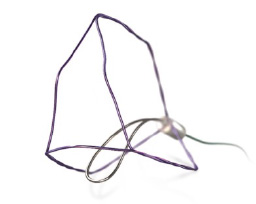Inclusion on Group Purchasing Organization Contracts Can Offer Greater Patient Access

CENTER VALLEY, Pa., (March 28, 2024) – Olympus, a leading global medtech company providing innovative solutions for medical and surgical procedures, announced today a milestone for its iTind™ device with its availability and greater patient access through the largest healthcare group purchasing organization (GPO) contracts in the United States.
The iTind procedure is a minimally invasive procedure for the treatment of benign prostatic hyperplasia (BPH) or enlarged prostate. The iTind device is now available on 13 GPO contracts in the U.S.
GPOs exist to help healthcare providers, such as hospitals, ambulatory surgical centers and nursing homes, save money by aggregating their purchasing power and standardizing and streamlining purchasing. The Healthcare Supply Chain Association estimates nearly all hospitals and a majority of non-acute care centers in America belong to at least one GPO.1
“The availability of the iTind device through major GPO contracts marks an important milestone for Olympus,” said Jay Sullivan, Group Vice President, Enterprise Solutions, Medical Systems Group, Olympus. “Most importantly, it means greater physician and patient access to a minimally invasive treatment option for a common urological condition that does not require medications, permanent implants or the removal of tissue.”
BPH is a common health problem for men over 50 as the risk increases with age. Symptoms of BPH include frequent urination with a sense of urgency and a weak urinary stream and excessive urination at night.2
About the iTind procedure
Evidence shows the iTind procedure is an effective alternative to pharmaceutical therapy, as well as an alternative to surgeries and permanent implants, and is proven to relieve symptoms without affecting sexual and ejaculatory function2,3 or urinary continence.5
The iTind procedure involves the placement of a temporarily implanted nitinol device that reshapes the prostatic urethra without burning or cutting out the prostate. The device can be placed in an outpatient setting or physician office. It remains in place for five to seven days while the patient is at home. Upon removal, patients experience rapid and effective relief of their symptoms.3,4
Recently published data show that the iTind™ procedure provides long-lasting relief of more than four years. The long-term study data demonstrates that the iTind procedure leads to significant and durable reduction of BPH-related LUTS (lower urinary tract symptoms) and improved IPSS (International Prostate Symptom Score) and QoL (Quality of Life) for over 50 months and up to 79 months (6.6 years) following treatment.6
AUA Guidelines
The iTind procedure has also been included in the American Urological Association (AUA) clinical practice guideline for management of LUTS attributed to BPH. The iTind procedure is reflected in the new procedure category, Temporary Implanted Prostatic Devices (TIPD).7 The addition of the TIPD category is based on expert opinion reflecting peer-reviewed treatment recommendations and research updates.
The iTind procedure may not be for everyone. Please consult with a doctor to see if the iTind procedure is right for you. As with any medical procedure, implantation of the iTind device comes with the possibility of side effects, including pelvic discomfort, blood in urine, and/or painful or urgent urination. In rare cases, the iTind device may cause urinary tract infection or a sudden difficulty to urinate.
More information about the iTind procedure is available at BPHTherapy.com/iTind.
# # #
About Olympus
At Olympus, we are committed to Our Purpose of making people’s lives healthier, safer and more fulfilling. As a global medical technology company, we partner with healthcare professionals to provide solutions and services for early detection, diagnosis and minimally invasive treatment, aiming to improve patient outcomes by elevating the standard of care in targeted disease states.
For more than 100 years, Olympus has pursued a goal of contributing to society by producing products designed with the purpose of delivering optimal outcomes for its customers around the world.
Olympus Corporation of the Americas, a wholly owned subsidiary of Olympus Corporation, is headquartered in Center Valley, Pennsylvania, USA, and employs more than 4,500 employees throughout locations in North and South America. For more information, visit olympusamerica.com.
1Healthcare Supply Chain Association, supplyassociation.org, Frequently Asked Questions
2Urology Care Foundation, urologyhealth.org, “Urology A-Z: Benign Prostatic Hyperplasia (BPH).” Updated September 2023
3Elterman, D; Alshak, M; Martinez Diaz, S; et al. “An Evaluation of Sexual Function in the Treatment of Lower Urinary Tract Symptoms Secondary to Benign Prostatic Hyperplasia in Men Treated with the Temporarily Implanted Nitinol Device.” Journal of Endourology, pub. December 2022
4Chughtai, B; Elterman, D; Shore, N; et al. “The iTind Temporarily Implanted Nitinol Device for the Treatment of Lower Urinary Tract Symptoms Secondary to Benign Prostatic Hyperplasia: A Multicenter, Randomized, Controlled Trial.” Journal of Urology, pub. July 2021
5De Nunzio C, Cantiello F, Fiori C, et al. Urinary and sexual function after treatment with temporary implantable nitinol device (iTind) in men with LUTS: 6-month interim results of the MT-06-study. World J Urol. 2021
6Amparore, D; De Cillis, S; Schulman, C; Kadner, G; Fiori, C; Porpiglia, F. “Temporary implantable nitinol device for benign prostatic hyperplasia-related lower urinary tract symptoms: over 48-month results.” [published online ahead of print, 2023 Jun 23]
7Sandhu, JS; Bixler, BR; Dahm, P; et al. « Management of lower urinary tract symptoms attributed to benign prostatic hyperplasia (BPH): AUA Guideline amendment 2023.” Journal of Urology 2023

